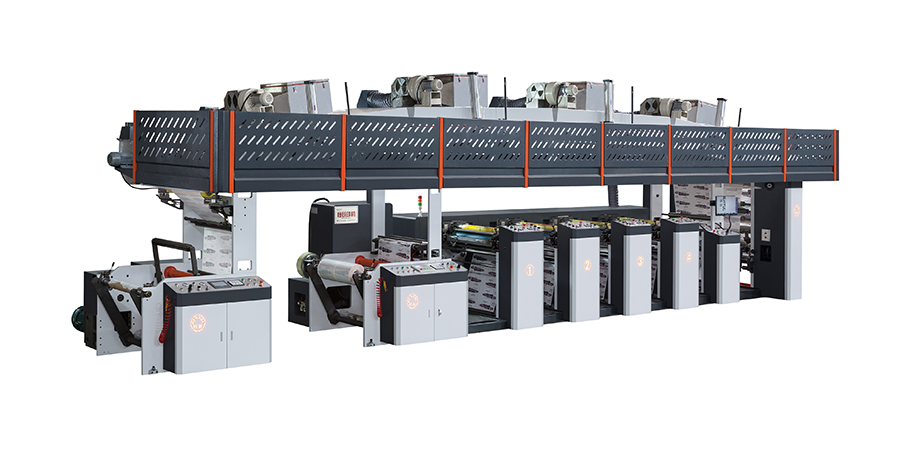 Feb 19, 2025
Feb 19, 2025
Visit:308
 Feb 19, 2025
Feb 19, 2025
Visit:308
Flexo printing, short for flexographic printing, has a long - standing history that has seen it evolve from a relatively basic printing method to a highly sophisticated and efficient technology in the modern printing industry. The journey of the flexo printing machine from tradition to modernity is a remarkable story of technological advancements, innovation, and adaptation to market demands.

In the early days, flexo printing machines were simple in design. They used rubber relief plates, which were relatively easy to produce. These plates were mounted on a cylinder, and the ink was transferred from an ink - covered roll to the plate and then onto the substrate. This basic mechanism was suitable for simple and large - scale printing jobs, such as printing on corrugated cardboard for packaging purposes.
However, traditional flexo printing machines had several limitations. The quality of the printed image was often lower compared to other printing methods like offset printing. The color registration accuracy was not very high, leading to issues when printing multi - color designs. The printing speed was also relatively slow, which limited productivity. Moreover, the inks used in traditional flexo printing were often solvent - based, which raised environmental concerns due to their high volatile organic compound (VOC) emissions.
As the market demanded better - quality prints and higher productivity, the flexo printing machine began to undergo gradual improvements. One of the significant changes was the development of photopolymer plates. These plates replaced the rubber plates and offered better resolution and image quality. Photopolymer plates could hold finer details, allowing for more intricate designs to be printed.
Ink technology also saw advancements during this period. Water - based inks started to gain popularity as a more environmentally friendly alternative to solvent - based inks. Although water - based inks had some initial challenges, such as slower drying times and different adhesion properties, continuous research and development helped to overcome these issues.
Printing speed was another area of focus. Engineers worked on improving the mechanical components of the flexo printing machine to increase the speed at which the substrate could be printed. This involved upgrading motors, bearings, and other moving parts to handle higher speeds without sacrificing print quality.
Modern flexo printing machines are a far cry from their traditional counterparts. They are equipped with advanced digital technologies that have revolutionized the printing process. Digital pre - press systems have made it easier to create and manage printing files. With computer - to - plate (CTP) technology, the process of making printing plates has become faster and more accurate.
Automation is a key feature of modern flexo printing machines. These machines can automatically adjust settings such as ink density, color registration, and printing pressure based on the job requirements. This not only improves the consistency of the printed products but also reduces the need for manual intervention, thereby increasing productivity.
The color management systems in modern flexo printing machines are highly sophisticated. They can accurately reproduce a wide range of colors, meeting the high - quality standards demanded by the market, especially in applications like label printing and high - end packaging.
In addition, modern flexo printing machines are designed with sustainability in mind. They use advanced ink - recovery systems to minimize ink waste, and the use of water - based inks and UV - curable inks has become more widespread, reducing the environmental impact.
Looking ahead, the flexo printing machine is expected to continue evolving. The integration of artificial intelligence (AI) and the Internet of Things (IoT) is likely to further enhance the performance of these machines. AI can be used to predict maintenance needs, optimize printing processes, and even improve color matching. IoT - enabled sensors can collect data on the machine's performance in real - time, allowing for remote monitoring and troubleshooting.
Moreover, as the demand for sustainable packaging continues to grow, flexo printing machines will need to keep pace by using more eco - friendly materials and processes. The development of new inks and substrates that are biodegradable and recyclable will be an important area of research.
In conclusion, the iterative path of the flexo printing machine from tradition to modernity is a testament to the power of innovation in the printing industry. From its humble beginnings with basic rubber - plate technology to the highly advanced and automated digital machines of today, flexo printing has continuously adapted to meet the changing needs of the market. As we look to the future, the flexo printing machine is set to play an even more significant role in the global printing landscape, driven by technological advancements and the pursuit of sustainability.
 Apr 22, 2025
Apr 22, 2025
 Mar 19, 2025
Mar 19, 2025
FLEXO PRINTING MACHINE
FLEXO PRINTING MACHINE
FLEXO PRINTING MACHINE
GET A QUOTE